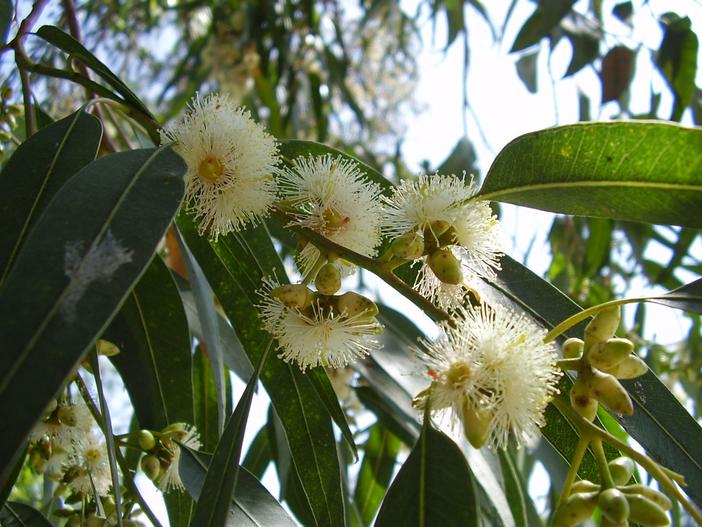Tasmanian Bluegum
(Eucalyptus globulus)
Tasmanian Bluegum (Eucalyptus globulus)
/
/

Joan Simon
CC BY-SA 2.0
Image By:
Joan Simon
Recorded By:
Copyright:
CC BY-SA 2.0
Copyright Notice:
Photo by: Joan Simon | License Type: CC BY-SA 2.0 | License URL: https://creativecommons.org/licenses/by-sa/2.0/ | Uploader: Joan Simon | Publisher: Flickr














































































Estimated Native Range
Summary
Eucalyptus globulus, commonly known as Tasmanian Bluegum, is an evergreen tree native to the temperate broadleaf, mixed forests of southeastern Australia, including Tasmania and Victoria. It can reach a height of 45 meters (148 feet) and under ideal conditions may grow as tall as 90–100 meters (300–330 feet). The Tasmanian Bluegum has a distinctive appearance with mostly smooth, cream-colored bark that sheds in long ribbons, juvenile leaves that are blue-green and waxy on the lower surface, and glossy green, lance-shaped adult leaves. Its white flowers are not particularly showy but are attractive to bees and other pollinators, and it bears woody, cone-shaped fruit. Flowering occurs at various times depending on the subspecies and location.
The Tasmanian Bluegum is valued for its rapid growth, adaptability to a range of soil types, and the eucalyptus oil produced from its leaves, which has medicinal and industrial uses. It is often planted for timber, windbreaks, and erosion control. In cultivation, it requires full sun and can tolerate a range of water conditions, from medium to low, and is adaptable to different soil drainage rates. However, it can be susceptible to eucalyptus gall wasp and other pests. Due to its aggressive growth and high water consumption, it can outcompete native species when grown outside its native range, and it is considered invasive in regions like California and Portugal.CC BY-SA 4.0
The Tasmanian Bluegum is valued for its rapid growth, adaptability to a range of soil types, and the eucalyptus oil produced from its leaves, which has medicinal and industrial uses. It is often planted for timber, windbreaks, and erosion control. In cultivation, it requires full sun and can tolerate a range of water conditions, from medium to low, and is adaptable to different soil drainage rates. However, it can be susceptible to eucalyptus gall wasp and other pests. Due to its aggressive growth and high water consumption, it can outcompete native species when grown outside its native range, and it is considered invasive in regions like California and Portugal.CC BY-SA 4.0
Plant Description
- Plant Type: Tree
- Height: 150-180 feet
- Width: 50-75 feet
- Growth Rate: Rapid
- Flower Color: White
- Flowering Season: Fall
- Leaf Retention: Evergreen
Growth Requirements
- Sun: Full Sun
- Water: Medium
- Drainage: Fast
Common Uses
Bee Garden, Bird Garden, Butterfly Garden, Deer Resistant, Drought Tolerant, Erosion Control, Fragrant, Hummingbird Garden, Salt Tolerant
Natural Habitat
Temperate broadleaf, mixed forests of southeastern Australia
Other Names
Common Names: Southern Blue Gum
Scientific Names: , Eucalyptus globulus, Eucalyptus gigantea, Eucalyptus globulus var. bicostata, Eucalyptus globulus var. stjohnii,
GBIF Accepted Name: Eucalyptus globulus Labill.